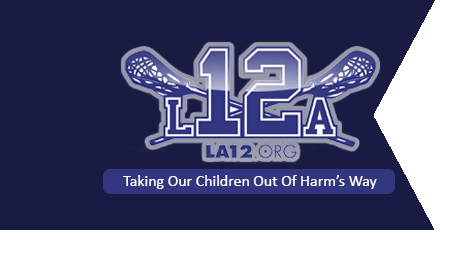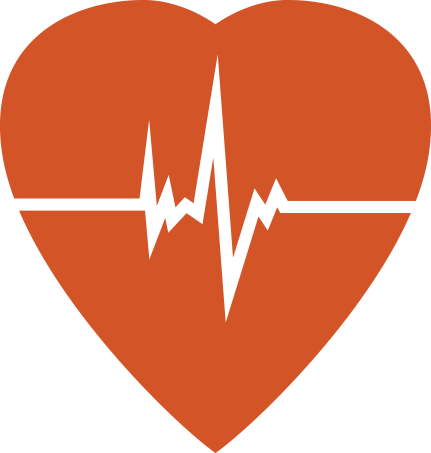Introduction
The Louis J. Acompora Memorial Foundation seeks to reduce the incidence of preventable deaths from cardiac arrest by providing access to life-saving defibrillators.
Each year approximately 250,000 people die from sudden cardiac arrest (SCA). The vast majority of these deaths are caused by the initiation of an abnormal heart rhythm called ventricular fibrillation (VF), a chaotic heart rhythm that results in a loss of circulation and delivery of oxygen to the body tissues. Louis Acompora suffered an episode of VF called commotio cordis.
The only effective treatment to reverse VF to a normal heart rhythm is defibrillation (electric shock to the heart). However, defibrillation must be provided early. If left untreated for approximately 10 minutes, this condition will result in irreversible brain death. Sudden cardiac arrest is indiscriminate as to age, race, or gender. Victims of SCA may never experience any warning signs.
Sudden cardiac arrest is not to be mistaken for a heart attack.
A heart attack (myocardial infarction) occurs when a blockage in a blood vessel interrupts the flow of oxygen-rich blood to the heart, causing the heart muscle to die. With a heart attack, the heart usually does not suddenly stop beating, although a heart attack can lead to sudden cardiac arrest.
Symptoms
Sudden cardiac arrest typically occurs without warning. Signs of SCA include:
- Sudden collapse
- Loss of consciousness
- Cessation of normal breathing
- Loss of pulse and blood pressure
Causes of Sudden Cardiac Arrest/Death
Structural / Functional
Arrhythmogenic Right Ventricular Dysplasia (ARVD) is a form of cardiomyopathy in which the heart muscle of the right ventricle is replaced by fatty-fibrous tissue. The scar tissue interrupts the normal smooth sequence of electrical activity that causes the heart muscle to contract, leading to arrhythmias. The weakened muscle will stretch, producing an enlarged right ventricle, which may not pump as effectively as a heart without ARVD. ARVD is often inherited.
Coronary Artery Abnormalities (CAA) is an abnormality or malformation of the coronary artery, a blood vessel that supplies blood to the heart muscle. This condition is present at birth but can be silent for years until vigorous exercise is performed. During exercise, blood flow to the heart muscle can be impaired and result in ventricular fibrillation.
Dilated Cardiomyopathy (DCM) is the most common form of cardiomyopathy and occurs when heart muscle tissue is enlarged and stretched, making it difficult for the heart to function. DCM usually follows a viral infection.
Hypertrophic Cardiomyopathy (HCM) is the second most common type of cardiomyopathy and results in excessive thickening of the heart walls, usually on the left side. The thickened heart muscle can block blood flow out of the heart and can increase the risk of ventricular fibrillation. In over half of the cases, this heart disorder is hereditary. HCM is the most common cause of sudden cardiac death in athletes in the United States.
Kawasaki Disease is characterized by inflammation of blood vessels throughout the body, including the coronary arteries of the heart. It often begins with a persistent high fever greater than 102°F, often as high as 104°F, which typically lasts at least 5 days and does not usually go away with normal doses of acetaminophen (Tylenol) or ibuprofen.
Marfan Syndrome is an inherited abnormality of the connective tissue (ligaments and tendons) in the body. The wall of the aorta, the main artery from the heart, can become weak and rupture, especially during exercise. Often, affected people are tall and thin with long arms, legs, fingers, and toes.
Mitral Valve Prolapse (MVP) is a disorder that affects one of the heart’s valves — the mitral valve. The mitral valve doesn’t close properly, allowing backward leaking of blood from the heart’s chamber. This may predispose some people to endocarditis, an infection of the heart valves and parts of the inside lining of the heart muscle, due to bacteria that adhere to the valve from dental work or surgery.
Myocarditis is an inflammation of the heart muscle caused by either a viral, bacterial, or fungal infection. It is often caused by the Coxsackie virus. It causes weakening of the heart’s pumping action and decreases its ability to supply oxygen-rich blood to the body. Most people recover from viral myocarditis with no ill effects. It is better not to participate in sports when a fever, chills, and muscle aches are present, or symptoms that are indicative of a bad cold.
Electrical
Brugada Syndrome is an abnormality of the heart cells that disrupt the electrical activity in the heart and can cause life-threatening heart rhythms.
Catecholaminergic Polymorphic Ventricular Tachycardia (CPVT) is characterized by exercise or stress-induced ventricular arrhythmias in which the heart’s lower pumping chambers go into very rapid and uncontrolled rhythms that do not pump blood effectively.
Long Q-T Syndrome (LQTS) is a disturbance of the heart’s electrical system. A genetic mutation causes a defect in the heart cells, called ion channels, which then prolongs the time the heart takes to electrically recharge after each heartbeat (known as the QT interval). LQTS is usually inherited. In other cases, LQTS can be caused by certain medicines, toxins, electrolyte disturbances, or other forms of heart disease.
Wolff-Parkinson-White Syndrome (WPW) is a condition in which the normal electrical signals in the heart travel along an extra, abnormal electrical pathway. This condition can create a “short circuit” in the electrical system and lead to abnormally fast heart rates (tachycardia). WPW is sometimes inherited.
Other
Commotio Cordis is a condition that causes cardiac arrest if a sudden blow to the chest occurs at a critical point when the heart is electrically recharging. It can occur with an impact of very little force. It is usually caused by a baseball, lacrosse ball, or a hockey puck despite the use of a chest protector. Chest protectors are designed primarily to protect a child from soft tissue damage and bone injury on impact, not as protection from the potentially fatal heart rhythm that can also occur as a result of impact. Wearing a chest protector thus creates a false sense of security. Commotio cordis is the second leading cause of death in young athletes while playing baseball, usually occurring between the ages of 7 and 16. Every child is vulnerable.
Drugs or Stimulants – Even someone with a completely normal heart can develop ventricular fibrillation and die suddenly due to drug or stimulant use.
Source: “What is Sudden Cardiac Arrest (SCA)?” Parent Heart Watch. Web. 06 July 2011. Retrieved from
https://parentheartwatch.org/resources/what-is-sca/


